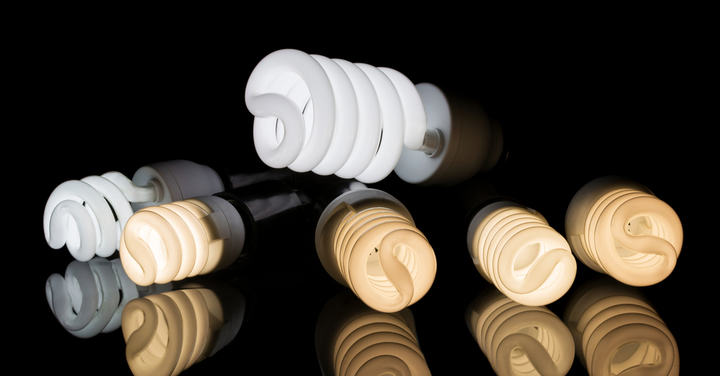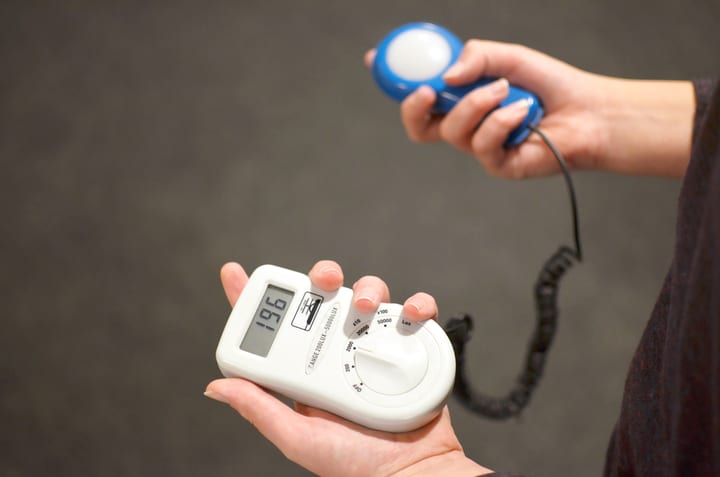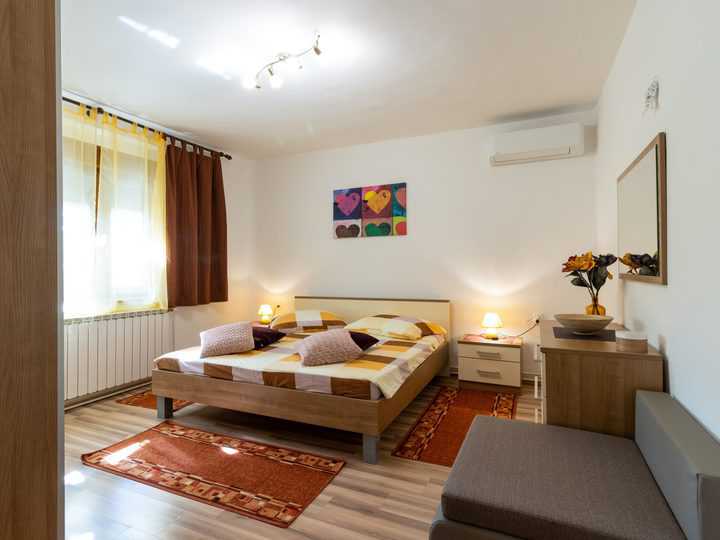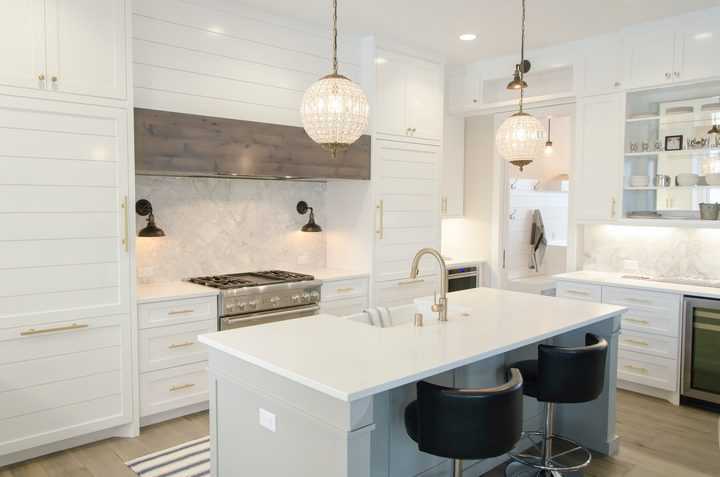Working out the number of lumens you need for your lights at home isn’t too tricky, but it’s something you want to get right.
Choose a light that’s too dim, and you might not be able to see what you’re doing properly. But buy lights that are too bright, and you won’t be able to relax properly.
You can work out the right lumen level for your home by multiplying the area (sq. meters) by the recommended lux (lumen per square meter) for the room type. Kitchens and garages need brighter lights than bedrooms and living areas.
In this guide I’m going to take you through some key points, including:
- Whether lumens or kelvins are more important
- How to determine the lumens you need
- The best lumens for a bedroom and a kitchen
Lumens Vs Kelvin: What Is More Important?

There are actually three elements to consider when choosing a light. Lumens and Kelvins are important, but it’s worth checking the CRI of a bulb too.
Lumens refer to brightness – how much light the bulb produces.
A bulb with a higher lumen rating will be brighter.
Kelvins and CRI refer to the color, but Kelvin is usually the bigger concern since there is more variance here.
The kelvins of light refers to the temperature, with most light bulbs falling between 2000K and 6500K.
The lower the number, the warmer the light, closer to an orange/yellow-white. The higher the number, the cooler the light, closer to a blue-white.
CRI (Color Rendering Index) is a figure which tells you how accurately the light replicates the intended color.
LED lights usually have a CRI of 80 or better, which is considered good. Anything above 90 is excellent. Some older fluorescent lights may have been as low as 50, giving you a really dull-looking color.
So which is more important?
If you’re buying an LED light, just check that it has a CRI of 80 or above, and then you don’t need to worry about it.
The lumens and the kelvins are more important.
You’re unlikely to want a light with a high kelvin rating in a room where you want to unwind – cool blue-white lights aren’t as cozy for a bedroom or lounge.
In a room where you need to focus, like a kitchen or a hazard-filled garage, a cooler-white light will help you stay more alert.
Although you don’t want a light that’s too blue, you may not get an accurate view of your food while you’re cooking it.
Balance is important.
But luminosity matters too. It’s no good choosing a cool-white 5500K bulb to help you focus if it doesn’t shine very brightly.
You won’t relax with an orange-white light in your bedroom if it acts as your own miniature sun and blinds you.
Ultimately, you need to pay most attention to both lumens and kelvins.
How To Determine The Right Amount Of Lumens?

Now that you know that lumens are an important consideration, you’ll need to work out how to determine the lumen rating that you want.
That comes down to two things – the type of room and how big it is.
Think about it – there are rooms where you need to be able to see more of what you’re doing, like an office, and there are rooms where you just want to create a pleasant atmosphere for your evening.
But if you have a huge living room, choosing a low-lumen light bulb won’t be cozy. Instead, it’ll just be dim and uncomfortable.
What you need to work out is the amount of light per area, and this is usually given in one of two measurements – either a foot candle (1 lumen per square foot) or lux (1 lumen per square meter).
Lux tends to be used more despite the US usually using feet as a measurement.
So to work out how many lumens you need for your light, you can take the lux measurement of a room and multiply it by the flat area of the room (in square meters) to get the total luminosity needed.
Now, you’ve two ways to get lux.
If you already have working lights that give you the brightness you need, then you can buy a luxmeter (Amazon), which is a handy tool that will tell you the lux of a surface you point it at.
But if you don’t have a lux meter and also don’t have the lights you need already, then you can instead use some recommended guidelines from the Illuminating Engineering Society of North America.
Their recommendations are that, for rooms where you want to relax, an average of 150 lux is a good amount, while in rooms where you need to focus, you’ll want an average of 300 lux.
I say an average because rooms tend to have different surfaces at different heights.
If the floor is measuring at 300 lux in a kitchen, then a worktop underneath spotlights will probably measure 750 lux, which is a good level of light for food prep.
Once you have the recommended lux, multiply it by the square meter area of the room, and you’ll get the total lumens needed.
Then just make sure you buy either a main bulb or multiple bulbs that total that amount.
How Many Lumens Should I Get For My Bedroom?

Generally, bedrooms are places where you want to relax.
You don’t want a bright light because you’ll spend more time in your bedroom preparing for sleep than waking up.
Bright light can prevent your body from preparing itself for a night of rest in the right way.
So, with bedrooms you want between 100 and 150 lux. If you have a bedroom measuring 4 meters by 3 meters:
- 4 x 3 = 12 square meters
- 12 x 100 = 1200
- 12 x 150 = 1800
So you want somewhere between 1200 and 1800 lumens total for your bedroom, either from one main light or from a combination of a main light and lamps.
What Is The Optimal Amount Of Lumens For Kitchen?

With a kitchen, you’ll want brighter lights to make sure you stay safe while preparing food – you don’t want to be squinting when using knives.
An average of 300 lux at floor level is a good amount.
So, if you have a kitchen measuring 5 meters by 3 meters:
5 x 3 = 15 square meters
15 x 300 = 4500 lumens in total
With a kitchen, you’re more likely to split those lumens between multiple spotlights, so if you have 8 spotlights, you’ll want each of them to be around 600 lumens.
There are a few extra considerations if you’re looking at lights for a range hood, including getting the right temperature for cooking food safely – this guide will help.
Final Words
It’s crucial you don’t buy the first bulb you see when replacing or adding a new light to your home.
There are so many options when it comes to lumens and kelvins that you want to get the right fit for the room.
Do you find it easy, or is shopping for new light bulbs something you spend ages working out?
Have you ever thought about whether your lights are the proper brightness for the room?
Looking for an LED bulb but not sure what type you need?
Check out my free bulb picker and select the right bulb within few clicks.

